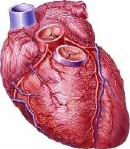Long-term survivors have greater prevalence of abnormal global longitudinal strain, diastolic function
TUESDAY, June 9, 2015 (HealthDay News) — For long-term childhood cancer survivors, abnormal global longitudinal strain and diastolic function are more prevalent than reduced three dimensional (3D) left ventricular ejection fraction (LVEF), according to a study published in the June 16 issue of the Journal of the American College of Cardiology.
Gregory T. Armstrong, M.D., from St. Jude Children’s Research Hospital in Memphis, Tenn., and colleagues examined the prevalence of cardiac dysfunction in 1,820 adult survivors of childhood cancers (median time from diagnosis, 23 years). Participants had been exposed to anthracycline chemotherapy (1,050 survivors), chest-directed radiotherapy (306 survivors), or both (464 survivors).
The researchers found that 5.6 percent of survivors had abnormal 3D LVEFs. Of the survivors with normal 3D LVEFs, 32.1 percent had evidence of cardiac dysfunction by global longitudinal strain (28 percent), American Society of Echocardiography-graded diastolic assessment (8.7 percent), or both. There were associations for abnormal global longitudinal strain with chest-directed radiotherapy at 1 to 19.9, 20.29.9, and >30 Gy (rate ratios, 1.38, 1.65, and 2.39, respectively) and for anthracycline dose >300 mg/m² (rate ratio, 1.72). Abnormal longitudinal strain and abnormal diastolic function were twice as likely for survivors with metabolic syndrome (rate ratio, 1.94 and 1.68, respectively), but this was not the case for abnormal 3D LVEF (rate ratio, 1.07; 95 percent confidence interval, 0.74 to 1.53).
“Long-term follow-up is needed to determine the predictive nature of these echocardiographic findings for major cardiac events,” the authors write.
One author disclosed financial ties to the medical technology industry.
Full Text (subscription or payment may be required)
Editorial (subscription or payment may be required)
Copyright © 2015 HealthDay. All rights reserved.








